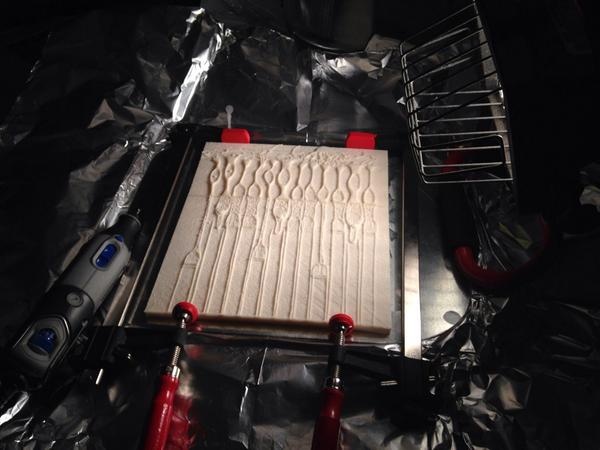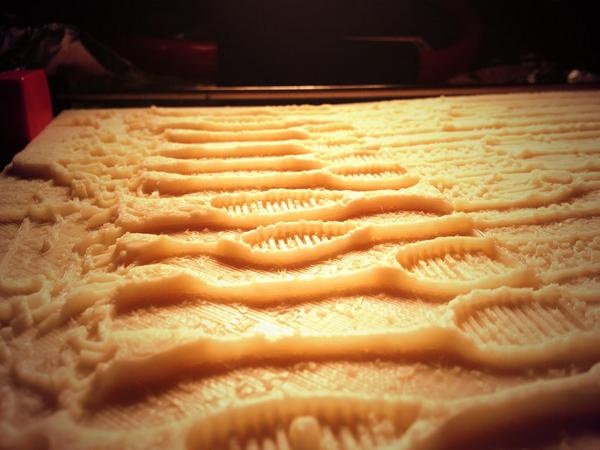Santiago Ramón y Cajal Exhibit
This exhibit, located near the North Entrance of the Neuroscience Building 35 on the NIH Campus, features the original illustrations of the "Father of Modern Neuroscience", famed scientist/artist Santiago Ramón y Cajal.
In addition to seven rotating original Cajal illustrations, the exhibit also features tangible 3d printed models which help offer perspective to visually impaired users. These files are made available on the 3D Print Exchange. Direct links to which are provided at the end of this page.
Santiago Ramón y Cajal (Spanish: [sanˈtjaɣo raˈmon i kaˈxal]; 1 May 1852 – 17 October 1934) was a Spanish neuroscientist and pathologist, specializing in neuroanatomy, particularly the histology of the central nervous system. He and Camillo Golgi received the Nobel Prize in Physiology or Medicine in 1906,[1] with Ramón y Cajal thereby becoming the first person of Spanish origin who won a scientific Nobel Prize. His original investigations of the microscopic structure of the brain made him a pioneer of modern neuroscience. Hundreds of his drawings illustrating the delicate arborizations of brain cells are still in use for educational and training purposes.
Photograph of the Cajal Exhibit in the Neuroscience Building
3D Printed Files
4th Installation (current)
- 3dpx-010423 - Auditory Tracts
- 3dpx-010424 - Axonal Tracts in Rat
- 3dpx-010425 - Cajal-Astrocytes
- 3dpx-010426 - Cajal-Astrocytes
- 3dpx-010427 - Cerebral cortex-ii
- 3dpx-010428 - Interneuronal Plexuses
- 3dpx-010429 - Medulla
3rd Installation
- 3dpx-010430 - 3334
- 3dpx-010431 - 3335
- 3dpx-010432 - 3645
- 3dpx-010433 - 3706
- 3dpx-010434 - 4026
- 3dpx-010435 - 11306
- 3dpx-010436 - 11317
2nd Installation
- 3DPX-002129 - Growth Cones
- 3DPX-002128 - Calyx of Held
- 3DPX-002127 - Developing Neocortex
- 3DPX-002126 - Olfactory System
- 3DPX-002125 - Insect Visual System
- 3DPX-002123 - Information Flow in Retina
- 3DPX-002116 - Astrocytes
1st Installation
- 3DPX-000790 - Dentate Gyrus
- 3DPX-000789 - Cortical Pyramidal Cells
- 3DPX-000788 - Hippocampus
- 3DPX-000787 - Spinal Cord
- 3DPX-000786 - Cerebellum
- 3DPX-000785 - Retinal Cross Section
- 3DPX-000784 - Cross Section of the Brain
Test Print
Photos
Photograph of the 3D printed plates being glued together
Close up of the 3D print





